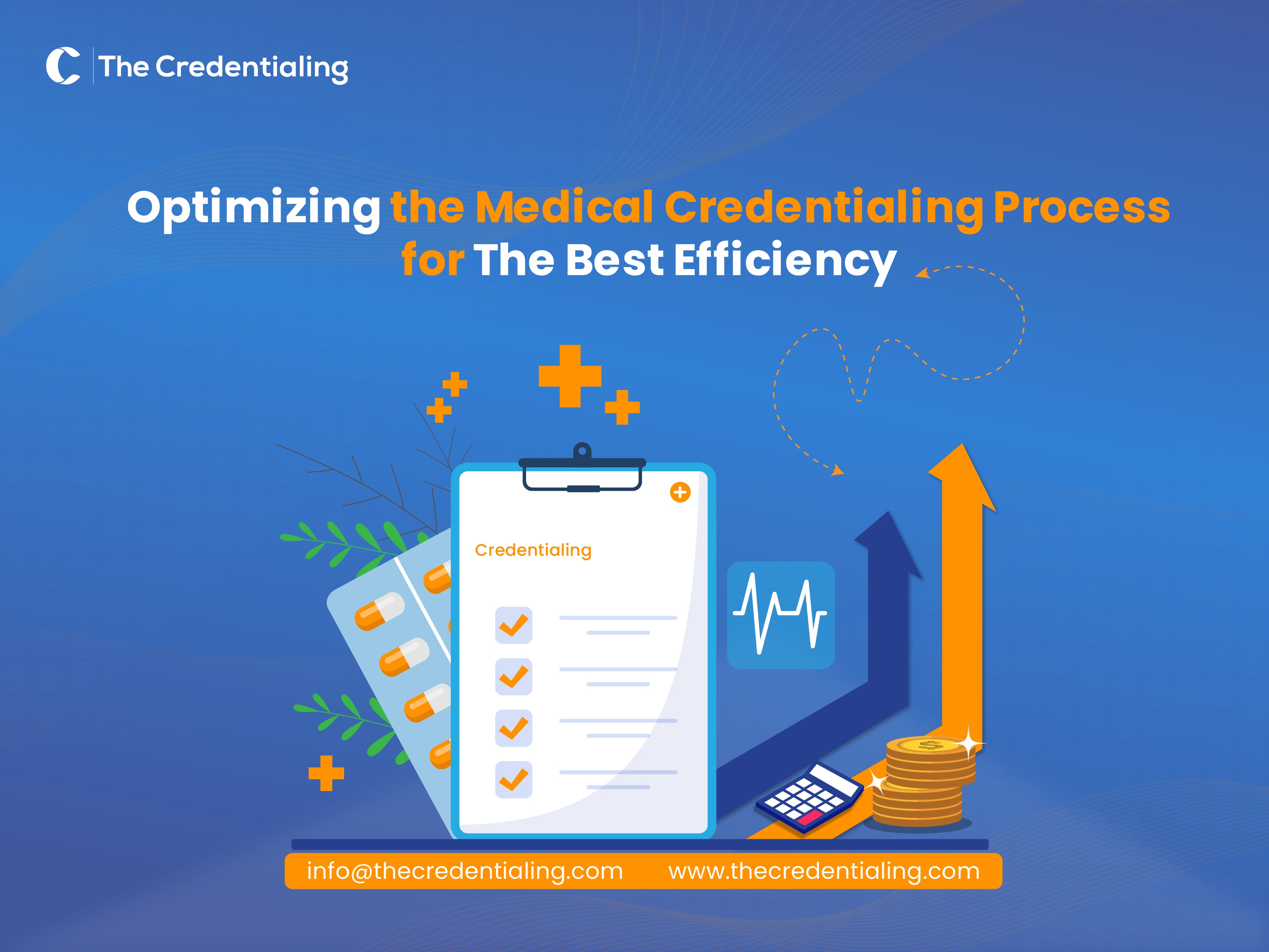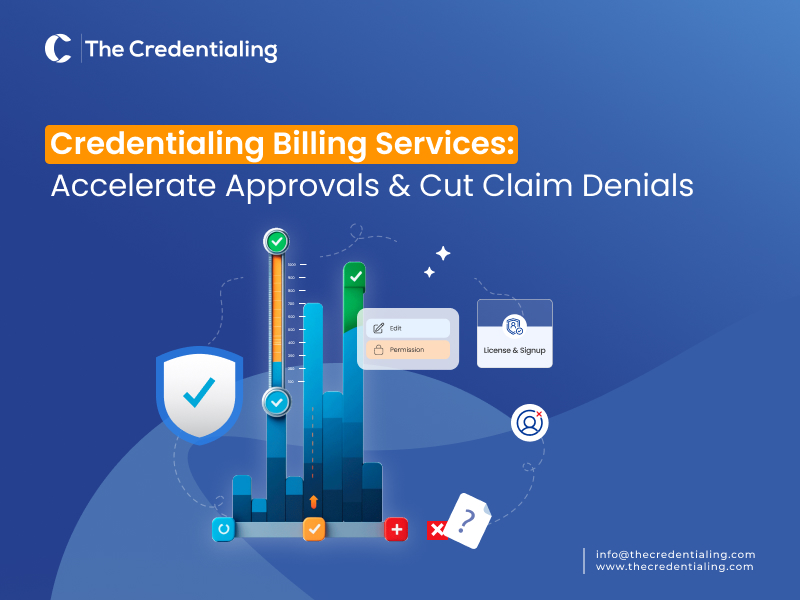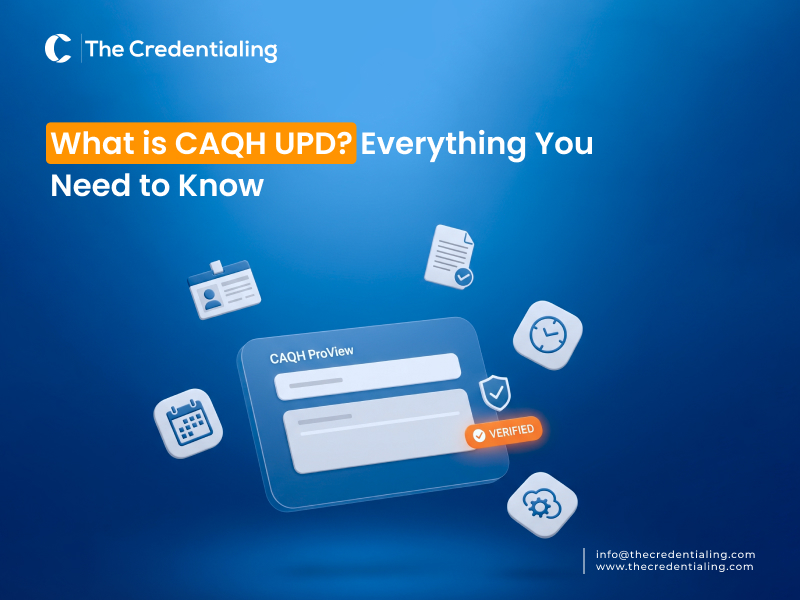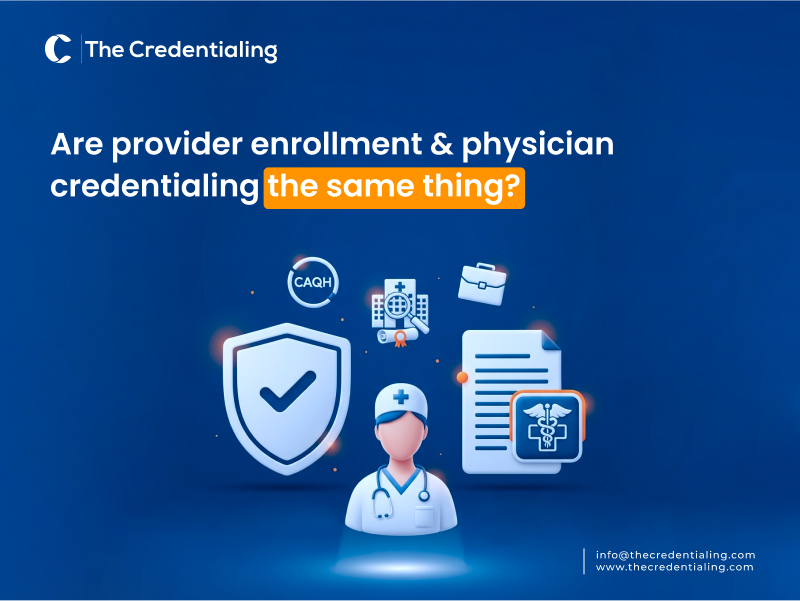Optimizing the Medical Provider Credentialing Process for the Best Efficiency
Provider credentialing is the process of verifying a healthcare provider’s qualifications. Learn why it's essential for patient safety, compliance, and billing.
Schedule Free Demo Today
What is Provider Credentialing in Healthcare and Why Does it Matter?
To ensure the quality and safety of your care, credentialing is the core! Set the specific standards of your practice to ensure you have qualified professionals who deliver care and are trustworthy. Plus, your patients deserve the confidence that their care is in capable hands, regardless of the location.
Credentialing verifies it all while continuously evaluating providers to determine whether their credentials fulfil the critical qualifications. Professional provider credentialing is a systemic assessment to confirm medical professionals’ expertise, qualifications, and trustworthiness so that they can serve the best care.
One of the reports by Health Stream highlighted in 2023 that 91.4% of healthcare practitioners and technical workers are also required to have a credential! The gap in the process is due to its complexity. For instance, meeting the hospital credentialing requirements leads to error-free checks to whether the professional credentials meet the compliance criteria.
But what is credentialing in healthcare, and why is credentialing important? It’s a structured verification of the credentialing process for providers that evaluates their qualifications and medical provider credentials.
As for health insurance credentialing, it enables providers to join insurance networks so that patients have access to their services. The more effective provider credentialing, the more reduced the risks of mismanaged credentialing operations. Plus, medical credentialing strengthens a provider’s reputation and enhances patient trust. However, maintaining the providers’ credentialing isn’t smooth sailing.
Hence, to help you understand how to get the best efficiency in credentialing, follow our crucial guide for an optimized process. We will help you know the several types of credentialing and the essential steps to get credentialed with Medicare.
Key Challenges in Provider Credentialing and Overcoming with The Physician Credentialing Checklist
In order to maintain the practice revenue and avoid delays, efficiency in credentialing is inevitable. However, the process is fraught with frequent challenges. A 2023 report by Symplr indicated that credentialing delays can cost practices around $9,000 per physician per day. A provider credentialing checklist is the key to starting an efficient credentialing process while understanding the state regulations. Beginning with the provider credentialing checklist template will help you enhance efficiency and stay competent with compliance standards. Plus, it’s simple with several significant steps:
Submitting the pre-application: A background check covering areas such as criminal records, records of disciplinary actions, and board certifications.
Verification of receipt: You will follow up with an email or call to confirm the receipt. The credentialing board may need more information that you will provide promptly along with the application. So, make sure you have all the required documents with their copies.
Provide all necessary information: After the official application, you will provide all necessary information supported by documentation in a designed form. The most important information in the credentialing checklist will include:
- Educational history and transcripts
- Current medical license, DEA registration, and board certification
- Work history
- Evidence of Continual Malpractice Coverage
- Personal immunization records
- Personal health history
- Professional and personal references
- Explanation of any gaps in work history
- Hospital privilege or hospital affiliations
- CAQH enrollment
Key challenges and solutions with Provider Credentialing Checklist
- Credentialing Challenges
- Provider Credentialing Checklist
- Missing or incomplete records cause delays
- Verify license, certifications, education, training, malpractice history, and insurance participation
- Regulatory and insurance requirements are cumbersome
- Itemize steps like NPI verification, state licensure, and DEA certification for clarity
- Ineffective communication between stakeholders leads to errors
- Ensure all parties (providers, hospitals, payers) are informed of their responsibilities
- Mistakes cause rejection and delays
- Double-check information accuracy before application submission
- Technology lags and inefficient workflows delay progress
- Adopt credentialing software to track progress and automate reminders
- Failure to stay updated risks penalties
- Incorporate regulatory updates into the checklist for continuous compliance
Medical Provider Credentialing VS. Primary Source Verification: What’s the Difference?
Primary Source Verification (PSV) Credentialing is a specific step within the broader system of credentialing. The difference between both lies in their scope and purpose within healthcare credentialing. Below is the highlight of some key points that differentiate both aspects of the system:
Medical provider credentialing
- Provider credentialing is a holistic process that verifies a healthcare provider’s overall credentials.
- This process is comprehensive and covers all aspects of a provider’s affiliations.
- Provider credentialing fulfills the objective of ensuring that they meet all necessary qualifications and are eligible to deliver care.
- The procedure includes checking work history, malpractice claims, insurance participation, and certifications.
- Provider credentialing is a broader requirement for healthcare facilities and insurance networks to maintain operational standards.
- However, the primary source verification is the key step in the process.
Primary Source Verification (PSV)
- Primary source verification (PSV) is a specific step within credentialing that directly verifies the authenticity of a provider’s credentials with the original source.
- PSV is a narrow term and it aims to verify a provider's specific credentials. For instance, license, degree, and certifications.
- Through these steps, professionals authenticate the credentials of applicants. Plus, they ensure the prevention of false data in the process.
- In PSV, the professionals contact universities, licensing boards, and certification agencies to confirm the authenticity effectively.
- It is a critical step in the process and is mandated by accrediting bodies like The Joint Commission (TJC) and the NCQA.
- PSV is a subset of the credentialing process.
Credentialing Efficiency Optimized Through Technological Integration
MedTrainer reports that healthcare administrators save an average of 3 weeks per year on credentialing tasks through automation. Technology has gained remarkable traction recently across healthcare for organizations with more efficiency. To understand the details, here’s the breakdown of significant perks:
- Automation has made the tracks and process identification so that administrative staff face little workload.
- Tech-support tools are also integrated with health systems to ensure the data is compliant with regulations.
- 85% of healthcare organizations have reported increased compliance with automation. For instance, when they incorporated electronic methods in credentialing.
- Plus, there is a tendency for interoperable systems in credentialing. These help professionals in smooth data sharing and increased collaboration between providers, regulatory bodies, and health plan providers.
Conclusion:
Enhancing efficiency in credentialing begins with understanding and identifying key challenges. Once you are aware of the frequent flaws and reasons behind them, success is possible by following several best steps and practices.
However, if you are confused about how long it takes to get credentialed with Medicare, it varies due to several factors. For instance, the type of healthcare provider, and specific Medicare Administrative Contractor (MAC) that handles your case. On average, the Medicare credentialing process takes 30 to 180 days. Usually, healthcare providers experience a wait time of around 90 days. However, first things first, the more complete and accurate the process, the increased chances are there to avoid delays.
Sit Back and Relax! Let The Pros Handle Credentialing For You!
thecredentialing has built a strong portfolio while providing credentialing services to clients over the years. Our service includes helpful features that you won’t find anywhere else.
Schedule Free Demo Today!

